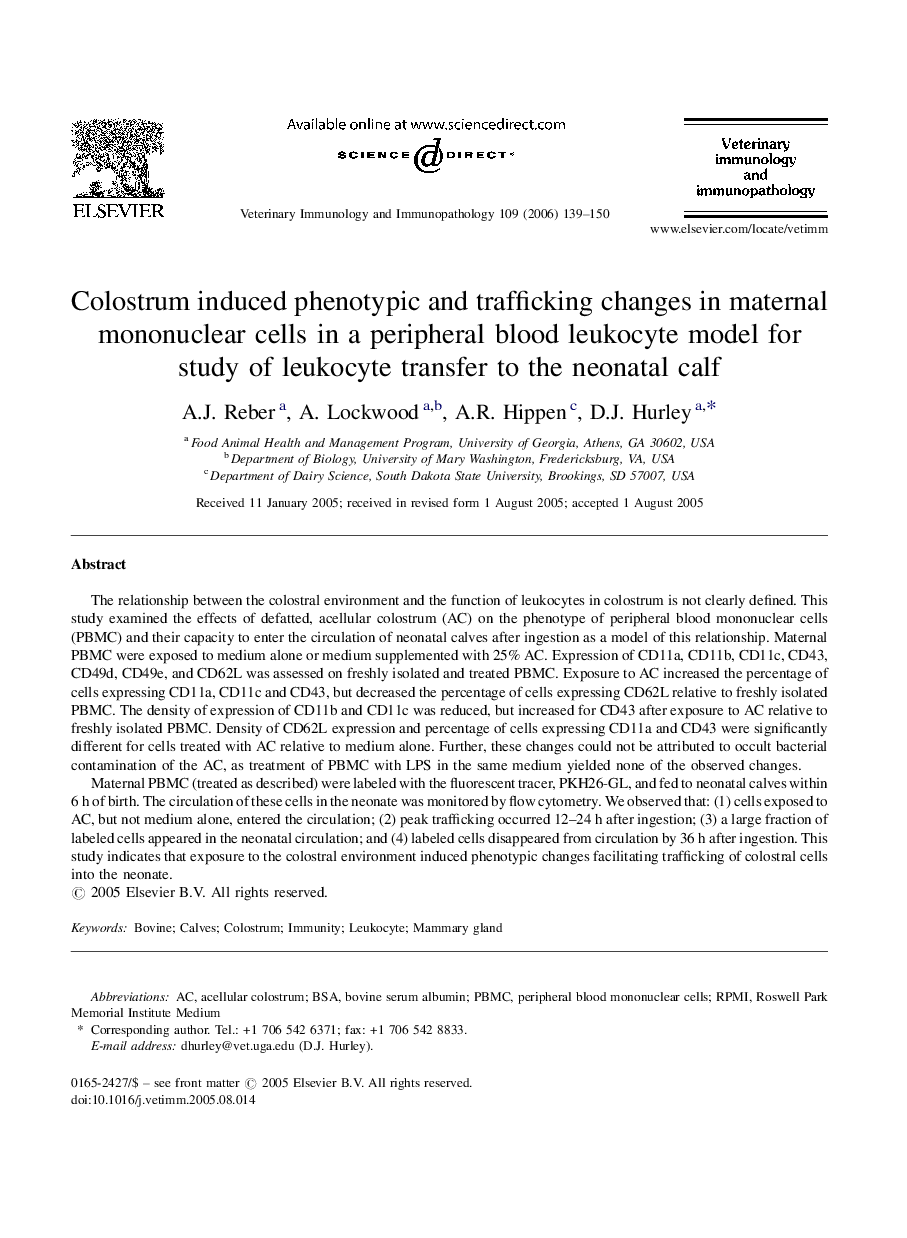| کد مقاله | کد نشریه | سال انتشار | مقاله انگلیسی | نسخه تمام متن |
|---|---|---|---|---|
| 2463610 | 1555128 | 2006 | 12 صفحه PDF | دانلود رایگان |

The relationship between the colostral environment and the function of leukocytes in colostrum is not clearly defined. This study examined the effects of defatted, acellular colostrum (AC) on the phenotype of peripheral blood mononuclear cells (PBMC) and their capacity to enter the circulation of neonatal calves after ingestion as a model of this relationship. Maternal PBMC were exposed to medium alone or medium supplemented with 25% AC. Expression of CD11a, CD11b, CD11c, CD43, CD49d, CD49e, and CD62L was assessed on freshly isolated and treated PBMC. Exposure to AC increased the percentage of cells expressing CD11a, CD11c and CD43, but decreased the percentage of cells expressing CD62L relative to freshly isolated PBMC. The density of expression of CD11b and CD11c was reduced, but increased for CD43 after exposure to AC relative to freshly isolated PBMC. Density of CD62L expression and percentage of cells expressing CD11a and CD43 were significantly different for cells treated with AC relative to medium alone. Further, these changes could not be attributed to occult bacterial contamination of the AC, as treatment of PBMC with LPS in the same medium yielded none of the observed changes.Maternal PBMC (treated as described) were labeled with the fluorescent tracer, PKH26-GL, and fed to neonatal calves within 6 h of birth. The circulation of these cells in the neonate was monitored by flow cytometry. We observed that: (1) cells exposed to AC, but not medium alone, entered the circulation; (2) peak trafficking occurred 12–24 h after ingestion; (3) a large fraction of labeled cells appeared in the neonatal circulation; and (4) labeled cells disappeared from circulation by 36 h after ingestion. This study indicates that exposure to the colostral environment induced phenotypic changes facilitating trafficking of colostral cells into the neonate.
Journal: Veterinary Immunology and Immunopathology - Volume 109, Issues 1–2, 15 January 2006, Pages 139–150